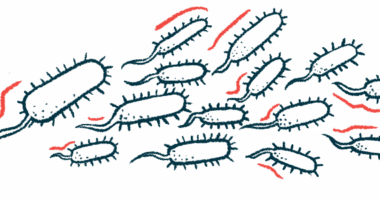Japanese CAD Patients Face Higher Risk of Blood Clots, Study Finds

Japanese patients with cold agglutinin disease (CAD) are almost three times more likely to develop blood clots compared with people without this autoimmune disorder, a study reports.
These findings are in agreement with the results for non-Asian populations, according to the researchers.
The study, “Demographic characteristics, thromboembolism risk, and treatment patterns for patients with cold agglutinin disease in Japan,” was published in the International Journal of Hematology.
CAD is a form of autoimmune hemolytic anemia in which autoantibodies called cold agglutinins attack and destroy red blood cells — a process called hemolysis — at low body temperatures.
Hemolytic crisis and the generation of blood clots that block blood flow, called thromboembolism, are serious complications of CAD. Such blood clots are more frequent among people with CAD than in the general population, previous studies in the U.S. and Denmark have shown.
Now, researchers from Japan assessed the risk for thromboembolism in the Japanese population, and investigated which factors contribute to this complication.
Data was analyzed from 344 patients with CAD — 53.2% female, mean age 66.8 years — and 3,440 matched controls, or people of the same age and sex, but without the disease. The patient information was collected from a hospital-based database that includes data on about 22 million people treated at 338 hospitals in Japan.
The CAD patients were followed for a mean of 18.9 months and the healthy controls for 19.2 months.
The findings — from data from 202 people with CAD (59%), followed for one year or longer — showed that the most common treatment was corticosteroids, used in 29.2% of patients. Prednisolone was the most frequently prescribed corticosteroid, given to 24.3% of patients. Rituximab (marketed as Rituxan, among others), which depletes antibody-producing immune B-cells, was prescribed to 5.9% of patients.
Thromboembolism was more frequent in people with CAD compared with the controls (34.9% vs. 17.9%). Specifically, those with CAD were found to have a 2.8 times higher likelihood of developing blood clots. Primary CAD patients, whose disease has no known cause, were 3.4 times more likely to have thromboembolism.
A significantly higher rate of blood clots was seen both in the arteries (25% vs. 4.6%) and the veins (8.4% vs. 4%) of people with CAD as compared with the healthy controls. Heart attacks were the most common outcome of arterial blood clots in the CAD group, affecting 75 patients among a total of 86 (87.2%). In addition, CAD patients experienced arterial events at a younger mean age than those without the disease (67.9 vs. 72.4 years).
The most frequent events involving the veins were deep vein thrombosis, which usually affects the legs, and pulmonary embolism. Pulmonary embolism is a blockage in one of the pulmonary arteries in the lungs. No significant difference was observed for the frequency of thromboembolism affecting the brain between the CAD group and the healthy controls (10.5% vs. 11.9%).
Treatment had no influence in the rate of thromboembolism. The data showed that 42 of 117 patients (35.9%) who received treatment for CAD had thromboembolism, while 78 of 227 untreated participants (34.4%) experienced the same complication.
Among the patients treated with corticosteroids alone, 13 (24.5%) experienced thromboembolism.
People with CAD showed higher rates of hypertension (38.1% vs. 30.1%), diabetes (33.7% vs. 15.7%) and hyperlipidemia, or high blood fat (34.3% vs. 19%) than the healthy controls. According to the investigators, the high use of corticosteroids by the CAD patients could help explain the greater frequency of hypertension and diabetes.
Overall, “this study demonstrates that, consistent with non-Asian populations, TE [thromboembolism] risk is significantly increased for patients with CAD in Japan,” the researchers wrote.
Moreover, “there was a particularly high rate of myocardial infarctions [heart attack] observed in this patient population,” they said.
The researchers noted there had been a lack of information about CAD treatment practices in Japan, and few case reports, which highlighted the need for further information about the risk of thromboembolism.
“Japanese patients with CAD should be monitored closely for the development of these complications,” the team concluded.





